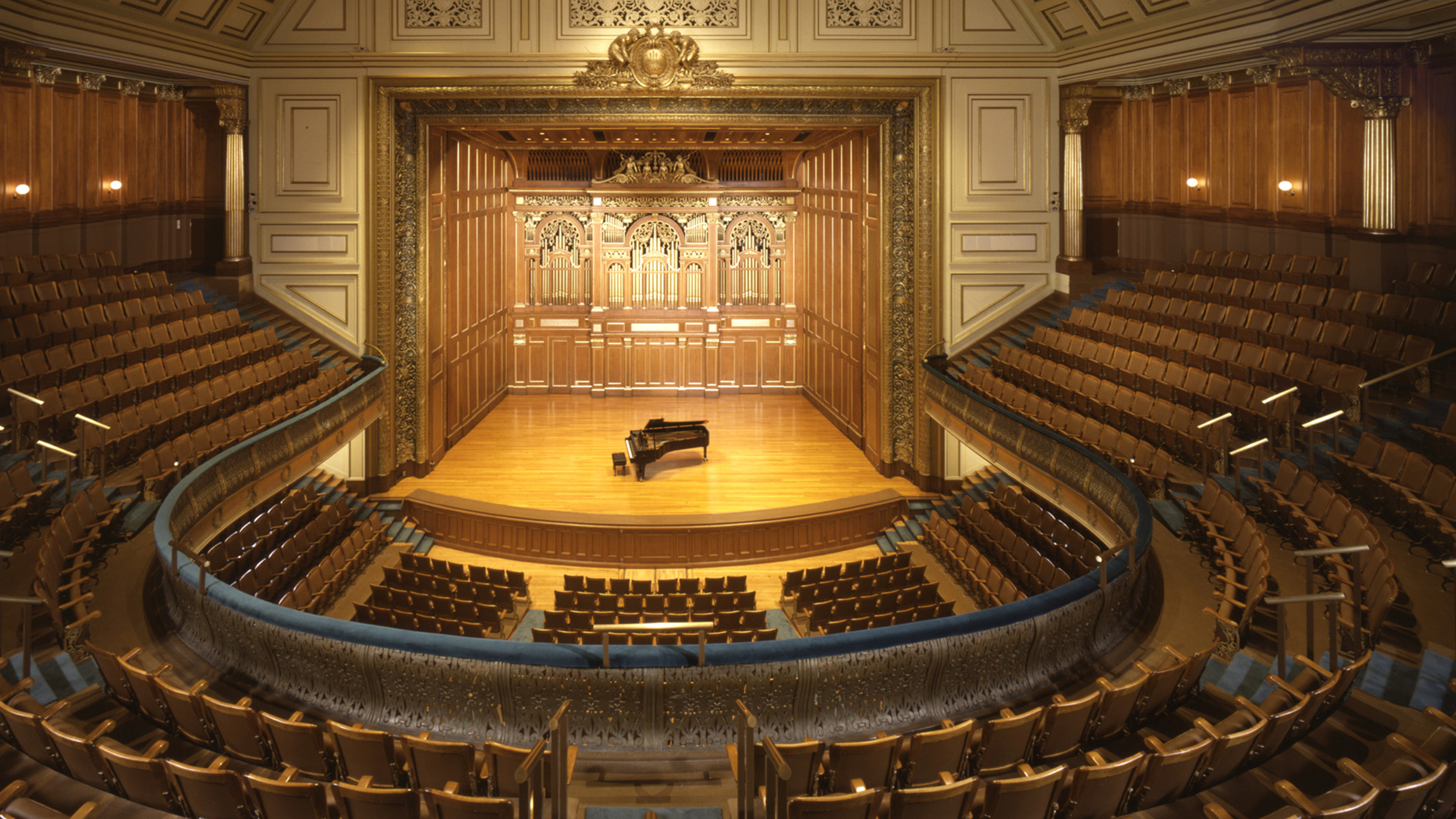Chamber Music International starts off its new season at Dallas City Performance hall with a bang.
September 28, 2013
DALLAS — Chamber Music International is a producing organization rather than a presenter. This means that they assemble players for a specific program. This is not as random as it might appear because they frequently use the same players, in different configurations, throughout the season. In fact, violinist Nai-Yuan Hu has played with the organization from the start. Artistic Director Philip Lewis has impeccable taste in programming, and there is usually something written in the 20th or 21st century on each program.
That said, this opening program was an exception to that rule. Mozart, Mendelssohn and Fauré are hardly adventurous, even though the selections are not performed all that often.
Mozart's Duo in G Major for Violin and Viola received an energetic performance from Hu and the excellent violist, Scott Lee. This piece, ghost written as a favor for a composer friend of Mozart’s who was ill and couldn't complete his commission, is an amazing example of the miraculous way music flowed. He dashed this out and gave it away. While Hu was impressive as always, it was Lee's rich viola sound that caught your attention. It was dark-hued yet still had much of the brilliance of the violin. This three-movement piece is the equivalent of a full-blown sonata and requires complete technical command of the instruments. This the two players ably demonstrated. Although limited to two instruments, Mozart's genius filled in the entire work so that you never were aware of the limited palette.
Mendelssohn's Cello Sonata No. 2 in D Major Op. 58 is rarely heard, which is a shame because it is brimming with everything you love about the composer's music. As in most of his compositions, there is never a break in the forward motion, sometimes not even between movements, and even the slow movements have continuous motion. His music is also very difficult to play and full of very fast passage work. All of this is true about this sonata and perhaps its extreme difficulty, for both the cello and the piano, is part of the reason it is not heard more often.
Cellist Bion Tsang and pianist Meng-Chieh Liu were certainly up to the task. Both players gave a definitive performance, technically clean and musically adept. Tsang's tone is so dark and rich that you wondered how light on his feet he would be in the nearly impossibly fast passage work. However, he maintained the depth of the sound no matter how lightly or quickly he played. This piece is written with both parts being equal: the piano is a partner, a collaborative pianist, rather than an accompanist. Liu demonstrated equally nimble fingers and kept pedaling to a minimum so that all of the passage work rang out with great clarity. The chorale in the slow movement, played in big arpeggios in the piano, was Mendelssohn's hat tip to Bach. In a nice touch, Liu lathered on the pedal in this passage so that we were aware of the underlying structure and harmony.
The Fauré Piano Quartet No. 1 in C minor, Op. 15 is another piece that is rarely performed and a welcome one to hear. It is a relatively early work, with more Brahms in it than this later style would allow. The three, Liu, Tsang and Hu, gave it an exceptional performance. They brought out the elements that would be the hallmarks of the composer's later style and never overplayed. Hu was occasionally on the inside of the pitch, but not enough to mar the performance. It also would have been better, in both the Fauré and the Mendelssohn, if the Yamaha piano, with its brash bass, had not been played with the lid full open. The half stick would have been served the ensemble.
By Gregory Sullivan Isaacs
Read the full review...









